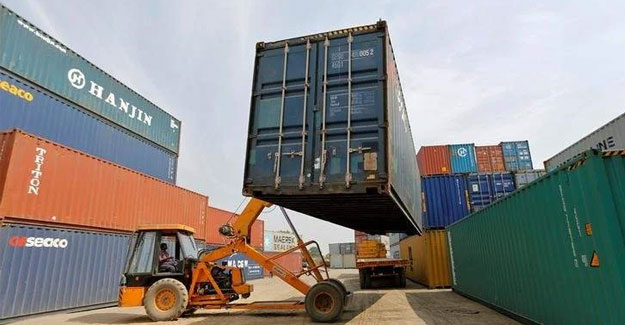
Textile Industry Eagerly Awaits New Logistics Policy
The proposed National Logistics Policy which is likely to be announced soon, will go a long way in addressing the issues the domestic logistics sector has been facing all these years. The Union commerce ministry has recently sent the proposed policy to the Cabinet for approval. The policy framework will help draw a roadmap as also action plans that will promote seamless movement of goods across the country & reduce high transaction cost which has been impacting the competitiveness of domestic goods in the international markets. Logistics cost in India, as a percentage of GDP, is as high as 13-14% as compared to 8-10% in case of its global counterparts. "The transportation and logistics cost as a percentage of GDP is quite high in India. In efficient economies like Hong Kong, Singapore and many European countries this statistic stands between 5-8%. There is a need to bring it down to single digits. Efficient logistics can significantly enhance a country's ability to trade globally," says R S Subramanian, country manager at DHL Express India. "The global market for textiles has become highly competitive and we need to eliminate all possible efficiencies from our supply chain so that our goods can be competitive. In textiles, logistics play a critical role and any improvement on this front will be a major positive factor," says D K Nair, consultant and former secretary general of Confederation of Indian Textile Indsutry. As per India Warehousing Market Report by Knight Frank, the primary reason for such high costs is the highly unorganised nature of this industry and the highly skewed multi-modal mix. Around, 60% of freight movement in India, happens via road which is significantly higher than most developed economies. Globally, the share of rail cargo in the multi-modal mix is higher. Further, different parts of the logistics value chain are currently being managed by numerous departments and ministries. The result of these multiple hurdles is increased inefficiencies in the logistics industry. "Logistics and warehousing constitute a critical link in the chain that connects the manufacturer to the eventual consumer. It is the efficiency of a business' logistics and distribution machinery that dictates their reach, time to market and cost efficiencies which prove to be a big factor enabling businesses to stay relevant in today's ultracompetitive environment," says Shishir Baijal, Chairman and Managing Director, Knight Frank India. Managing cash flows is the biggest challenge businesses face, while cutting costs, and inventory is the most significant component that locks cash up. Businesses need to ensure that adequate inventory is maintained to prevent a stock-out even during spikes in demand. While accurate demand estimation forms the foundation of this endeavour, it is the efficiency of the logistics chain that determines the cost and time savings that can be achieved. This need to constantly reduce the inventory cycle is revolutionising the role of the warehouse from a plain storage depot to a virtual pit-stop that facilitates inventory management, secondary packaging, cross-docking & extraction of products in the least possible time, adds the report. According to the report, total warehousing space, estimated to be 739 million sqft in 2019 for the manufacturing sector, is projected to grow at a CAGR of 5% in the next five years to 922 million sqft by 2024. The implementation of GST, the continued government focus on building industrial corridors, the 'Make in India' thrust on manufacturing & the promise of the Indian consumption market has whipped up the investment prospects of the country's warehouse property sector. Investors have started taking cognizance of the opportunities in the warehousing sector much before the government began to implement the reforms, such as GST, and granting infrastructure status to the logistics industry, including warehousing. The sector has witnessed massive participation from institutional investors, as well as developers, who have collectively invested over US$ 6.8 billion since 2014, with an average investment per deal of US$ 282 million. Some of the renowned and largest global pension funds, sovereign funds and private equity funds are investing actively into this space.
Textile Excellence
If you wish to Subscribe to Textile Excellence Print Edition, kindly fill in the below form and we shall get back to you with details.








